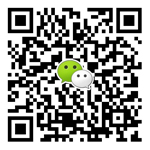Multicultural Pedagogy_ Blending Eastern and Western Teaching Methods
Shang Kun 2025-05-21 139
Multicultural Pedagogy: Merging Eastern and Western Approaches to EducationIn today's diverse world, educators are constantly exploring ways to create a more inclusive and effective teaching environment. This journey often leads them to the fascinating blend of Eastern and Western teaching methods. Traditional education systems, such as those in the West, often prioritize critical thinking, independence, and individualism. On the other hand, Eastern pedagogy emphasizes respect, discipline, and group harmony. The tension between these two systems presents an intriguing challenge for modern education: how can we merge these approaches to create a balanced, multicultural teaching method that addresses the needs of students in today’s global society?
The problem arises when educators try to adopt one method over the other, assuming that one will naturally fit all students. But what if that assumption is flawed? The potential conflict between Western individualism and Eastern collectivism can lead to missed opportunities for students who thrive in a diverse environment that nurtures both. This is where multicultural pedagogy comes into play. Instead of favoring one tradition over the other, it offers a fusion that respects both Eastern and Western values, creating a more holistic approach to learning.
So, how can we combine these two approaches effectively? The solution lies in creating a teaching environment that acknowledges the benefits of both systems. Imagine a classroom where students are encouraged to express their individuality, but also learn the importance of working together towards a common goal. By integrating Eastern values of respect and collaboration with Western ideals of innovation and personal growth, educators can foster a more well-rounded and inclusive learning experience.
Bridging the Gap Between Eastern and Western MethodsWhat if we could blend Eastern and Western teaching strategies in a way that doesn't just merge them on paper, but actually translates into practice? Well, the good news is that it’s already happening. More and more educators are incorporating a mix of these two pedagogical styles in their classrooms, creating an environment where students can flourish in ways that were once unimaginable. The results are impressive: students who are more empathetic, creative, and globally aware, ready to take on the challenges of the 21st century.

In the classroom, this means shifting from a purely competitive mindset to one that values collaboration, community-building, and personal growth. It’s about blending the direct, engaging approach of Western pedagogy with the more reflective, discipline-centered methods of Eastern education. Think about the value of integrating group activities that promote teamwork and group discussions with moments of independent problem-solving that encourage critical thinking. It's not about choosing one over the other—it’s about creating a rich learning environment that combines the strengths of both approaches.
Moreover, the beauty of this multicultural pedagogy lies in its flexibility. Educators can tailor their approaches depending on the context and the needs of their students. It’s not about rigidly sticking to a single framework, but about drawing on a broad set of tools that can address the diverse learning styles and cultural backgrounds of students. Whether it's in a classroom in New York, Beijing, or any city in between, the fusion of Eastern and Western teaching methods is not only possible but highly effective.
Empowering Educators with a Multicultural Pedagogical ApproachThe most exciting part about this blending of Eastern and Western education methods is the empowerment it provides to educators. With the right training and tools, teachers can create an enriching classroom environment that caters to students from diverse backgrounds. This approach offers more than just academic growth—it fosters social and emotional learning, encourages open-mindedness, and prepares students for the complexities of our interconnected world. The inclusion of multicultural pedagogy in teacher development programs is essential for educators who want to build a future-proof classroom that nurtures global citizens.
At the heart of this approach is the understanding that students are not one-size-fits-all. By recognizing the unique strengths that each teaching tradition brings, educators can provide a learning experience that fosters creativity, discipline, critical thinking, and cooperation. Multicultural pedagogy doesn’t just blend two traditions; it opens up a world of possibilities for the future of education.
Why It Matters for the Future of EducationWhat does the future of education look like when we successfully blend Eastern and Western teaching methods? It’s a world where students are not limited by the constraints of traditional systems but are empowered to think globally, collaborate across cultures, and tackle the challenges of an interconnected world. This approach isn’t just a trend—it’s a necessity in an increasingly multicultural society.
So, whether you are an educator, a parent, or a student, it's time to embrace the richness of multicultural pedagogy. It's a teaching philosophy that not only bridges cultural divides but also creates well-rounded individuals who can thrive in a diverse world. By drawing from the best of both Eastern and Western traditions, we can create a more inclusive, effective, and inspiring education system. This is the future of learning—one that prepares students not just for tests, but for life itself.
